2024 is the end of the “language playground on ancientc.com” era and I think it is valuable to close this period with this retrospective article.
This was an effort to create a learning platform with the following properties:
-3D gamified interactive learning
-Database driven
-Multiuser / social interactions
This effort was not successful, but we learned much during these years. Here are some of our milestones:
Milestones
- 2015 Register domain ANCIENTC.COM
- 2016 February Vision VR/AR Summit Los Angeles
- 2016 March Receiving HTC Vive
- 2016 Ancientc.com portal with basic portfolio
- 2016 HTC Vive navigation asset for Unity 3D
- 2016 May AR Chinese Characters learning prototype in Polyglot Gathering Berlin
- 2016 Releasing Learn Chinese with Language Mahjong
- 2021 UP Academy together with friends
- 2021 Attempting to publish a 3D multiplayer language learning environment and failing miserably
- 2024 Closing ancientc.com
2015 Register domain ANCIENTC.COM
It was my dream to create a portal for 3D playful language learning. I was looking for a good name and I decided that ANCIENTC.COM is fine because it starts with “A” and it sounds like “Ancient See” which I find a nice expression. This is not related to any other companies or concepts, just an imaginary name.
2016 February Vision VR/AR Summit Los Angeles
I participated in the Vision Summit in Los Angeles, which was an amazing conference about VR and AR. I met important players of this field and felt “included”.
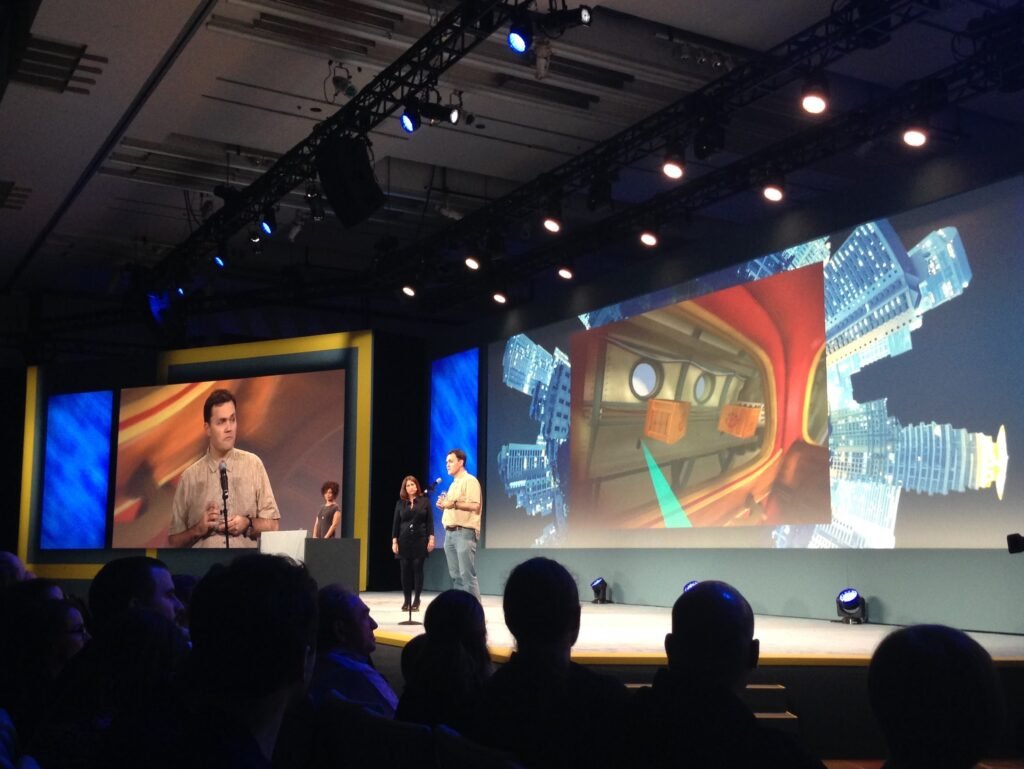
Here you see Jesse Schell, the author of “Art of Game Design:The book of lenses” talking about his adventures.
It was a huge surprise that all conference attendees received the brand new HTC Vive set. I still remember the uproar in the conference room as Gabe Newel announces the free gift 🙂

I think the Vive was the first really well made VR system with excellent tracking. Oculus Rift was also released in 2016 March, but the Vive controllers and handling was better, especially if you were standing.
2016 March Receiving HTC Vive
I was one of the first in Europe to receive an HTC Vive VR set. It was amazing, I showed it to all my friends and some journalists. A big step from the DIY VR sets I had before.
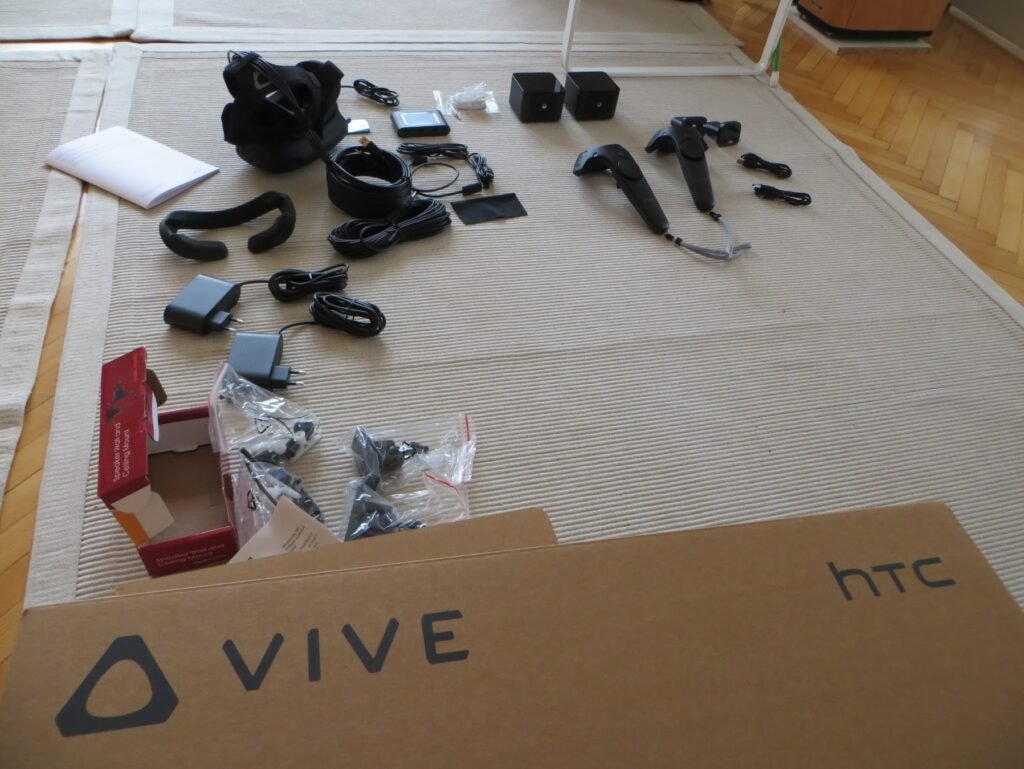
2016 Ancientc.com portal with basic portfolio
In 2016 I was in California with some friends and we started the portal “ancientc.com” what you can still find under zbalai.com/ac. We were planning to create amazing learning solutions. The hills from this picture are actually from Sedona, Arizona, near a nice and calm Buddhist park.

It was surprisingly difficult to create a simple responsive page, what looks good on a phone, tablet and desktop as well. I needed to understand HTML, CSS and quickly learned Bootstrap to do the job. I had developer and designer friends, but I was the main actor behind all this effort.

2016 HTC Vive navigation asset for Unity 3D
I met Kevin Mack at the Vision Conference in 2016. He wanted a simple navigation asset for the HTC Vive and we worked a few weeks later some hours to create one. We were looking for the simplest solution and it was simply adding a tiny force to the player controller if the vive controller trigger button was pressed.
I was amazed to be able to fly freely through my artificial spaces and the ones of Kevin. I even published the asset and it still works with a small fix, after eight years 🙂
https://assetstore.unity.com/packages/tools/flight-navigation-for-htc-vive-controller-61830
Kevin published his amazing dream world with a similar navigation:
https://www.kevinmackart.com/blortasia.html
2016 May AR Chinese Characters learning prototype in Polyglot Gathering Berlin
Poliglot congresses and gatherings are amazing chances to meet people interested in languages and in learning languages. I advise you to participate in one of them if you speak more than two languages.
https://www.polyglotgathering.com/2024/en/
I’ve created a prototype to recognize Chinese characters in an AR – augmented reality – app and show if the sentence formed is correct or not. We tried this in Polyglot Conference Berlin in 2016 and we had much fun with it. The accepted sentence list was limited, but polyglots are naturally curious and playful types, so they liked this type of AR gamification a lot.
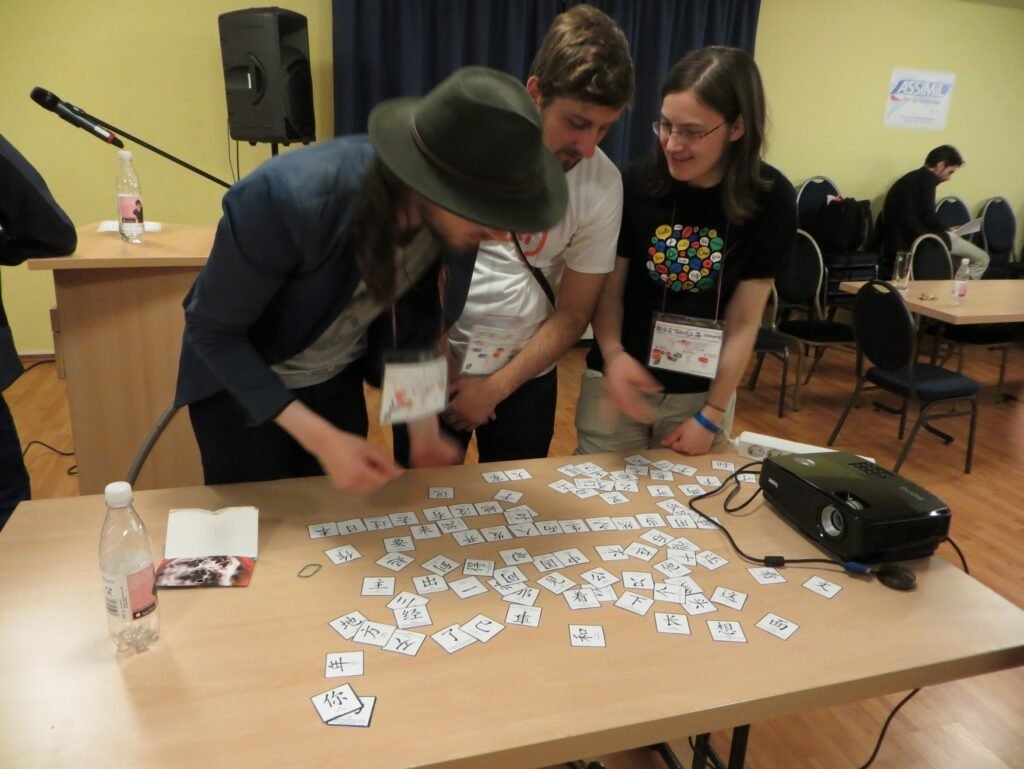
The AR system I used that time could recognize max 5-6 characters on a screen, so this posed a problem if you had like 15 characters on screen. The licensing was also not clear, especially if you were to recognize dynamic characters. So because of these uncertainties I decided to pursue other solutions instead.
Important Insight: in 2015 and 2016 there were like 2-3 good solutions for Augmented Reality apps like Vuforia for example. They delivered a closed source DLL(compiled module) for you to use in your app. You could augment target images only if:
-they were fixed
-not more than ten (as I remember, maybe only 5?)
-you didn’t earn any money
-you agreed that they callback their servers each time your app starts
-you agreed to all their licensing terms
I am talking about the free solution, what was mainly for testing and personal purposes. With all this stuff I am still thankful for the fun apps we could develop.
If you wanted dynamic AR content in 2016 that gets augmented from certain target images then you needed to pay and sign complex agreements. An AR engine was like esoteric magic.
This all changed by the deep learning revolution that was (re)started by Geoff Hinton 2010-2020. Today there are open source neuron array based libraries to recognize all square like objects in a video stream and other libraries to recognize any Chinese character. There are open source LLMs to evaluate a sentence and decide, if it is correct, the language level used in the sentence, and describe the sentence and any expressions and words in it. So previously unthinkable and very expensive solutions became accessible now.
2016 Releasing Learn Chinese with Language Mahjong
I started developing Language Mahjong in 2012, you can read the beginning of the story here https://zbalai.com/_wp/language-mahjong-story/. After countless challenges and technical hurdles with Unity 3D the development slowed to a halt.
Only after a random encounter with a friend, Rita, who was learning Chinese for her Astrology exam, did we restart development.
Mahjong is a relatively simple mechanic, a version can be done in 2-3 hours. There are however so many technical details connected to app publishing, sounds, graphics that we had to invest around 2000-2500 hours to finish this project. (Main barrier being my own perfectionism.)
2021 UP Academy together with friends
There was a great place for young artists, entrepreneurs and developers: UP Center and UP Academy in Budapest (In Buda to be more precise). An amazing friend of mine, Zoltan Tóth and his friends started the project. As far as I know the main reason was to help other young people grow and progress with their own projects.

Me and a friend of mine, Robert Retter decided to join UP Academy for a few months to learn about many different subjects:
- Self development/reflection
- Teambuilding
- Time management (Pomodoro and other methods)
- Online Collaboration principles/tools
- Strategy
- Marketing
SEO - …
I experienced and I learned a lot on these occasions. I would like to send our special thanks to our mentors, József Kollár, Ákos Vörös, and of course Zoltán Tóth, the main organizer.
2021 Attempting to publish a 3D multiplayer language learning environment and failing miserably
One UP Academy mentor in 2021 mentioned that there is a gamified learning Facebook group for teachers in Hungary. We posted a question and asked for help and a very innovative and friendly teacher answered our call. She even joined us – me and Robert – in a session to specify a word learning 3D playground. On 15. July 2021 we had a clear picture of what to deliver. We have promised to deliver a working version in 2-3 weeks.
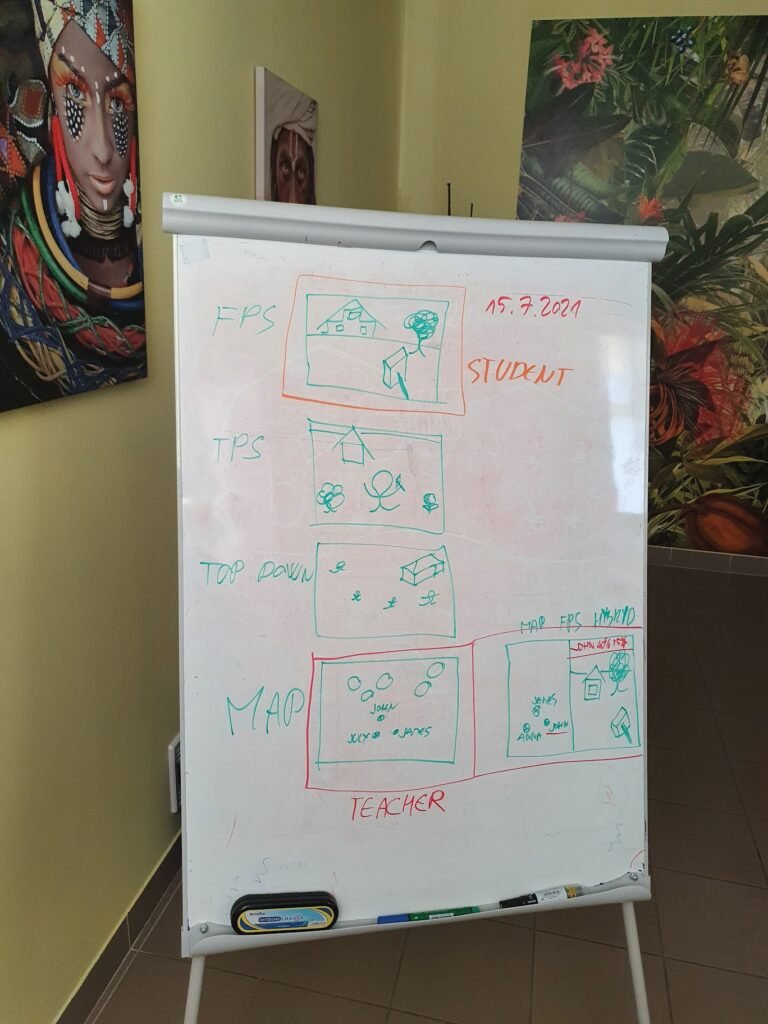
I’ve created the background database necessary for the gamified learning environment. I’ve prepared a simple playground with a word labyrinth, a word shooting game and a stone jumper. It was well on its way and then the solution started to crumble:
We used Unity 3D WebGL build as the frontend and Firebase as backend. We desperately needed a special solution that connected the Unity 3D part with the Firebase, ideally in Unity 3D IDE AND in WebGL too.
There was a solution like this: A developer called “Twisted Tamarin” a Hungarian guy living abroad developed an asset that could connect Unity 3D WebGL with Firebase. I’ve bought his asset for like 50 EUR and we started to use it. We even had a solution where some words were loaded into the language games.
Then, somewhen in July 2021 he realized that his solution is pirated to unlicensed apps. So he started to put an additional check each time someone started up an app with this asset included. This is already a bad sign, since you don’t want your app to say hello to a third party each time it starts. (Unity 3D itself sends an UDP package to an address each time your app starts, but this is OK for me. One package. Not one package for each asset I included in my game…)
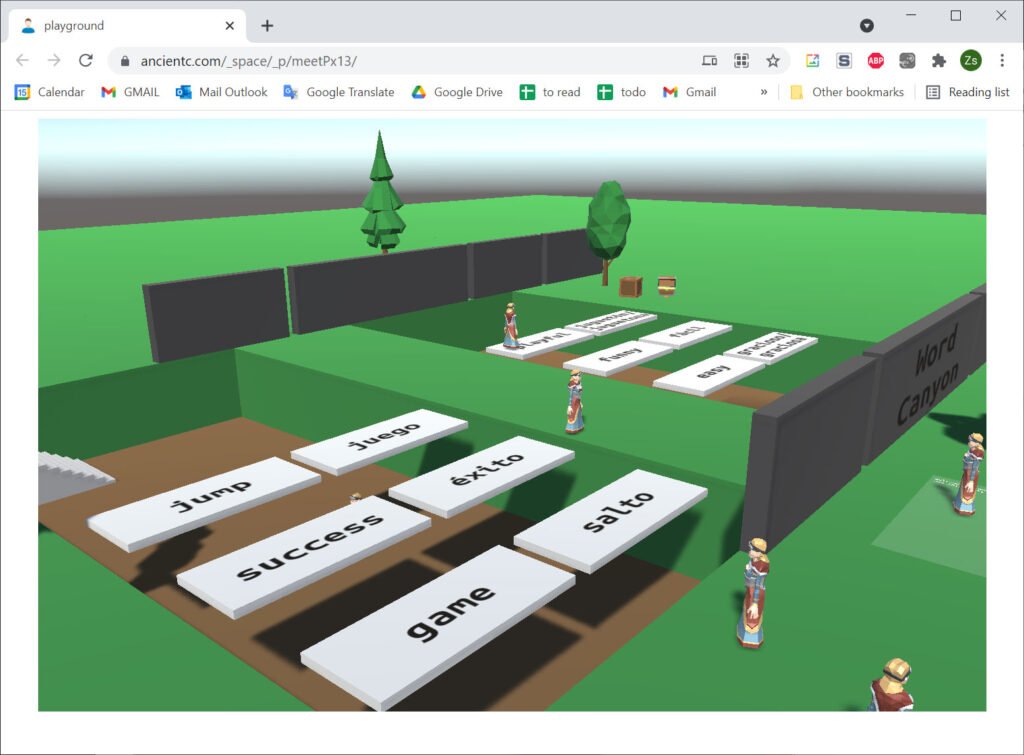
Then a routine was running to check licensing each time we started the Unity 3D editor. This routine often – like half the time – couldn’t run well, so we needed to manually login/register/reregister/restart some routines or programs each time the Unity editor started. This made effective development very difficult.
Then additionally I realized that we do not have an authorization for each individual, just for the group as a whole. This meant that a Javascript-savvy student could crack the system in 4-8 hours. (Maybe 2-4 weeks, or maybe never, I cannot really tell.)
School networks are very restricted, we didn’t know if our request would work in such systems.

Unity 3D build time went up from 60 seconds to 180-240 seconds, which made development slower.
So the effort slowly started to come to a halt. I was looking for an alternative Unity 3D – Firebase asset, invested like 60-80 hours into it, in vain. I was looking for a different database type, then I realized that we would need 1 a database for words and users and 2 a dynamic network data system for Unity 3D like Photon, because Firebase could handle both of these. Unfortunately, I have not found any similar solution on the market that time.
So around September / October 2021 I had to realize that we cannot deliver our solution…
2024 Closing ancientc.com
Now, eight years after our start in 2016 I am closing ancientc.com in its current form. All articles were moved to learnandsmile.net. If no one is taking the domain, it will be released in March 2025.
Reasons I am happy
- We did not spend the 5000 – 15000 USD to create content. Now with LLMs you can generate quality content for much less and the proofreading costs like 500 – 1500 USD.
- I did not promise developers and designers that we will get rich from only this.
- We did not generate thousands of code lines. Now with LLM coding tools like Github Copilot, Cursor, Claude, Llama, … I can test my “intention based development” concept.
- Most importantly: We have not left paying customers in the ditch. Often if a company goes down it can not fulfil its promises anymore. I would like to create an antifragile system/company that is prepared to deliver on all commitments.
What can we learn from this?
This is my standard question in all endeavours we do. So what can we really learn from this?
I think one secret of Silicon Valley is applying service design (Design Thinking) in their projects. The “empathise, get to insights, ideate, prototype, test” cycle is valuable. Reducing risk as soon as possible is critical. Innovative gigs can be compared to rock climbing. Most people would simply fall down and die without ropes and tools. These ropes are guidelines in Service Design/Design Thinking. Ignore them at your peril.
What service design principles did I ignore?
A first prototype can have flaws: We could have published a first 3D language playground with a group authorization only and see if students really can break it or not.
First prototype is small: we planned 3-4 games for the first word practicing 3D space, it was way too much work. 1-2 games would have been enough.
Dare to be imperfect: even if you cannot yet edit your words, it is worth testing with a class of students with a fixed set for example. Their positive feedback can give the necessary inspiration for the next steps.
Skills I have, skills I need
This are my “Insights Discovery Wheel” positions. I see a reformer/director who desperately needs support and inspiration as complementary skills.

Interestingly many friends and developer collegaues are predominantly blue. It seems it takes extra effort for “blue” people to get to know and communicate “green” and “yellow” people. (See “The Big Bang Theory” for more details on this 😉 )
Next Steps
Applying service design tools for the next steps, like Importance/Difficulty Matrix.

Collecting skills and resources to continue
Delivering value as soon as possible

What a journey it was! Thank you for reading this long long article, I’should have finished like five pages ago 😀
